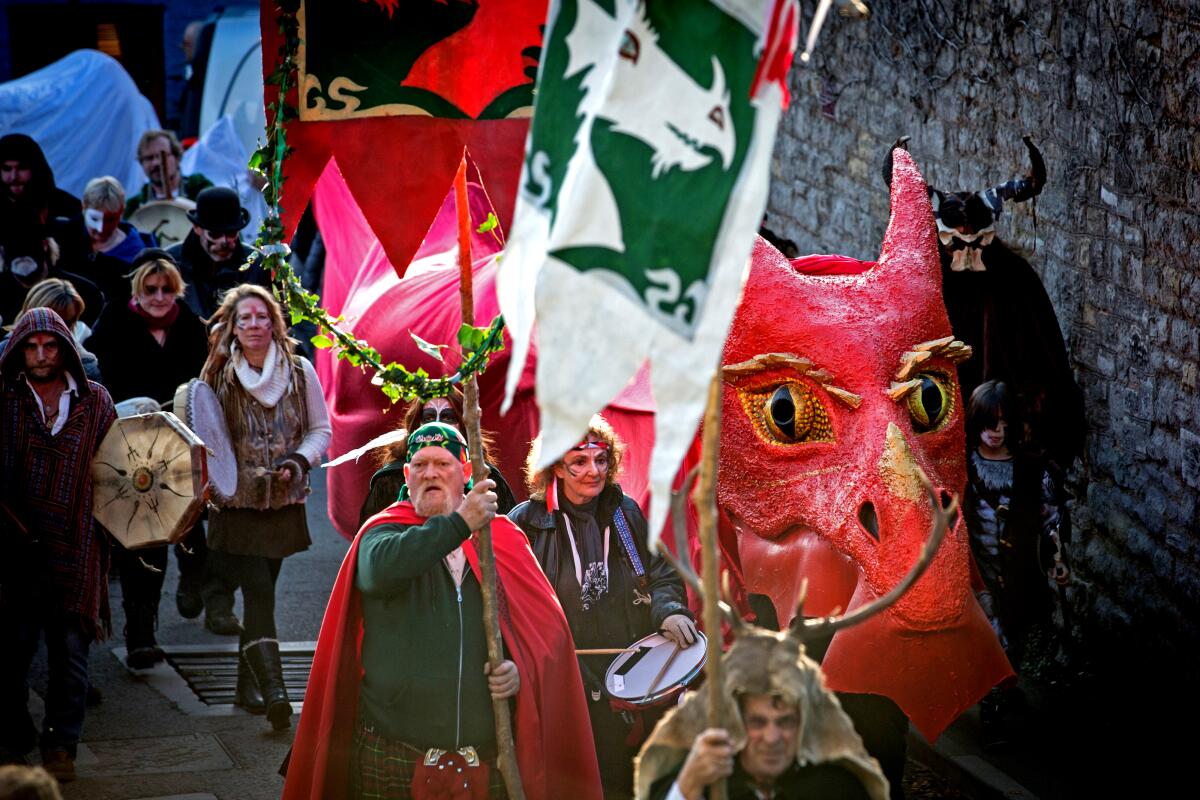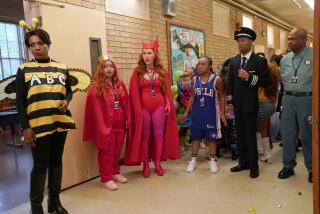Op-Ed: Halloween’s Celtic roots are a lot spookier than witches and candy bars

As Halloween approaches, people get ready to celebrate the spooky, the scary and the haunted. Ghosts, zombies, skeletons and witches show up in yards, windows and stores. Festivities revolve around the realm of the dead, and some believe the dead might actually mingle with the living on the night of Halloween.
Scholars have often noted that these modern-day celebrations of Halloween have origins in Samhain, a festival celebrated by ancient Celtic cultures. In contemporary Irish Gaelic, Halloween is still known as Oíche Shamhna, or Eve of Samhain.
In 9th century Irish literature, Samhain, halfway between the autumn equinox and the winter solstice, is mentioned many times as an integral part of the Celtic culture. It was one of four seasonal turning points on the Celtic calendar, and perhaps the most important one. It signaled the end of the light half of the year, associated with life, and the beginning of the dark half, associated with the dead.
Archaeological records suggest that commemorations of Samhain can be traced back to the Neolithic period, some from 6,000 years ago. Neolithic Ireland had no towns or cities, but the people did craft huge architectural monuments, which acted as seasonal gathering spots and housed the remains of the societies’ elites.
These megalithic (“big stone” in Greek) sites would at times host huge numbers of people, gathered together for brief periods around specific calendar dates. Archaeological records reveal evidence of massive feasts yet little to no evidence of domestic use. If people did live year-round at these sites, they would have been a select few.
Data from animal bones can reveal approximate time periods of the feasts, and additional data come from the monuments themselves. The monuments are not only situated in key places in the landscape but are also celestially aligned to allow the sun or moon to shine directly into the center of the monument on a particular day.
These sites connect the landscape to the cosmos, creating a lived calendar, scripted in stone. The UNESCO World Heritage monument of Newgrange, for example, is built so that a shaft of sunlight illuminates the innermost chamber precisely on the winter solstice.
Less than 30 miles away lies the hill of Tara, another massive megalithic site. The Mound of the Hostages, the oldest extant megalithic structure at Tara, is aligned to Samhain. Tara is known as the traditional spiritual and political capital of Ireland, and here too archaeologists have found evidence of mass seasonal gatherings of people, with the remains of feasts and great bonfires.
According to early Irish literature, as well as traditional folklore collected in the 19th century, Samhain was a time for people to come together, under a command of peace, to feast, tell stories, make social and political claims, engage in important sacred rituals and, perhaps most important, commune with the dead.
The traditional, pre-Christian realm of the dead was referred to as the Otherworld. The Otherworld was not somewhere far away but, rather, overlapping with the world of the living. The Irish beliefs about the Otherworld were detailed and complex. It is full of magic, of witchcraft, of speaking with the dead as well as seeing into the future. The dead were traditionally believed to continue to see the living, although the living could only occasionally see them. The most prominent occasion would be on Samhain itself, when lines between the Otherworld of the dead and the realm of the living were weakened.
There were not only particular days that one might encounter the dead but at particular places as well: the megalithic sites. These sites are known in Irish Gaelic as sí sites, the word sí meaning the spirits of the mounds. This word is often translated into English as “fairies,” which loses a great deal of meaning. “Fairies” in Ireland are spirits deeply connected with the realm of the dead, the mounds and, perhaps most especially, Samhain.
The connection can be witnessed in the figure of the banshee — or bean sí, in Irish — an important mythological figure in Irish folklore, believed to be heard wailing with grief directly before the death of a family member. With “bean” meaning simply “woman,” the banshee is thus a female spirit of the mounds and a ruler of the realm of the dead.
The sí spirits are not only spirits of the dead but are a particular aristocracy, who host the dead with feasting, merriment and eternal youth, often at the megalithic sites. In Irish lore, they are powerful and dangerous, able to give great gifts or exact great damage. They once ruled Ireland, according to folklore, and now they rule the world of the dead.
The Otherworld is always there, but it is on the beginning of the dark half of the year, the evening of Samhain — now Halloween — when the dead are at their most powerful and the lines between this world and the next are erased.
As the light of summer fades and the season of darkness begins, the ancient holiday of Halloween arrives to celebrate the dead mingling with the world of the living, as it has for thousands of years.
Tok Thompson is an anthropology professor at USC Dornsife and author of “Posthuman Folklore.” This article was produced in partnership with The Conversation.
More to Read
A cure for the common opinion
Get thought-provoking perspectives with our weekly newsletter.
You may occasionally receive promotional content from the Los Angeles Times.










